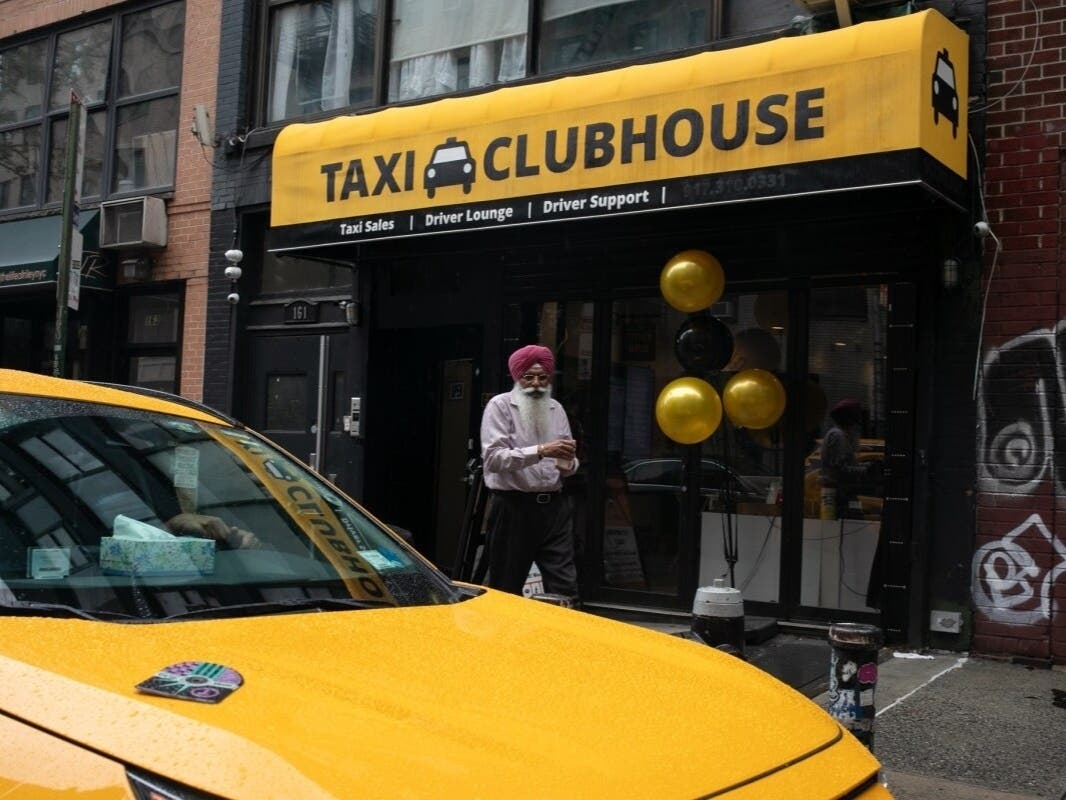October 14, 2205
Inside the Taxi Clubhouse in Chelsea, cabbies and drivers for the ride-hailing apps can lounge on a row of massage chairs, kneel in ritual prayer, pound a punching bag in a basement gym or hit the gas on a “Ridge Racer” video game.
Find out what’s happening in New York Cityfor free with the latest updates from Patch.
But for many Taxi & Limousine Commission-licensed motorists, a visit to the West 22nd Street clubhouse often boils down to the most basic of human needs.
“I come here for the bathroom, the bathroom, the bathroom, OK?” 58-year-old Samir Korkab, a yellow taxi driver since 2005, told THE CITY after making a pit stop at the clubhouse.
Find out what’s happening in New York Cityfor free with the latest updates from Patch.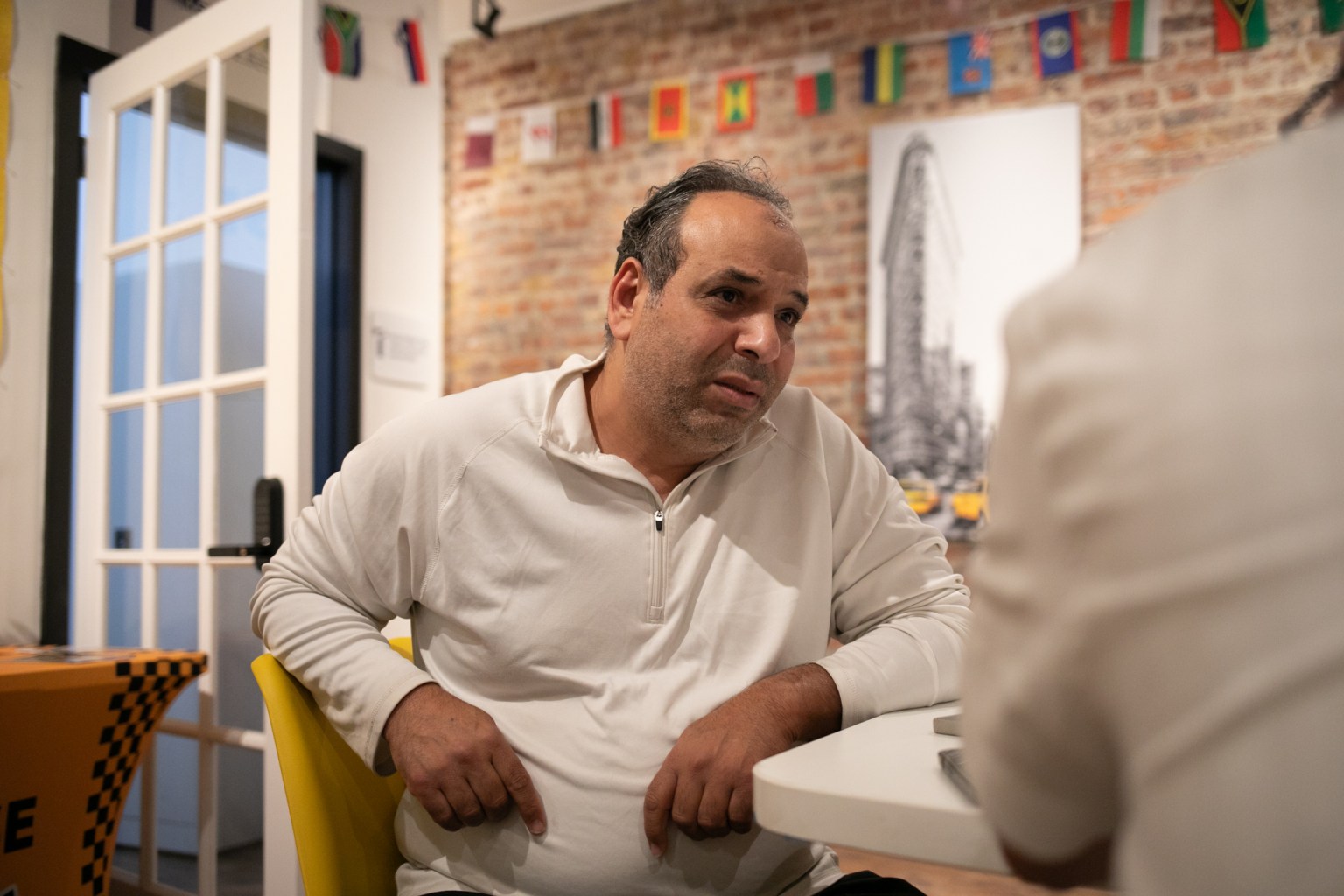
Yellow cabbie Samir Kurkab speaks about needing to use the facilities at a driver clubhouse on West 22nd Street in Manhattan, Sept. 25, 2025. Credit: Ben Fractenberg/THE CITY
Agency data shows there are close to 178,000 TLC-licensed drivers, but access to restrooms tends to be in short supply. Just 112 relief stands are scattered across four of the boroughs, allowing taxi and for-hire vehicle drivers to station themselves for up to one hour in order to unwind, eat, pray or find a restroom.
Drivers’ difficulty in scoring parking spots can leave them scrambling for other options, forcing many to eat in their vehicles or to use empty bottles as urinals.
“I had a customer in Brooklyn and I had to pee, but there was no restroom there,” taxi driver Isidore Yaguieou, 43, said on a recent visit to the clubhouse. “So I had to drive all the way here to use the restrooms — it gets tight.”
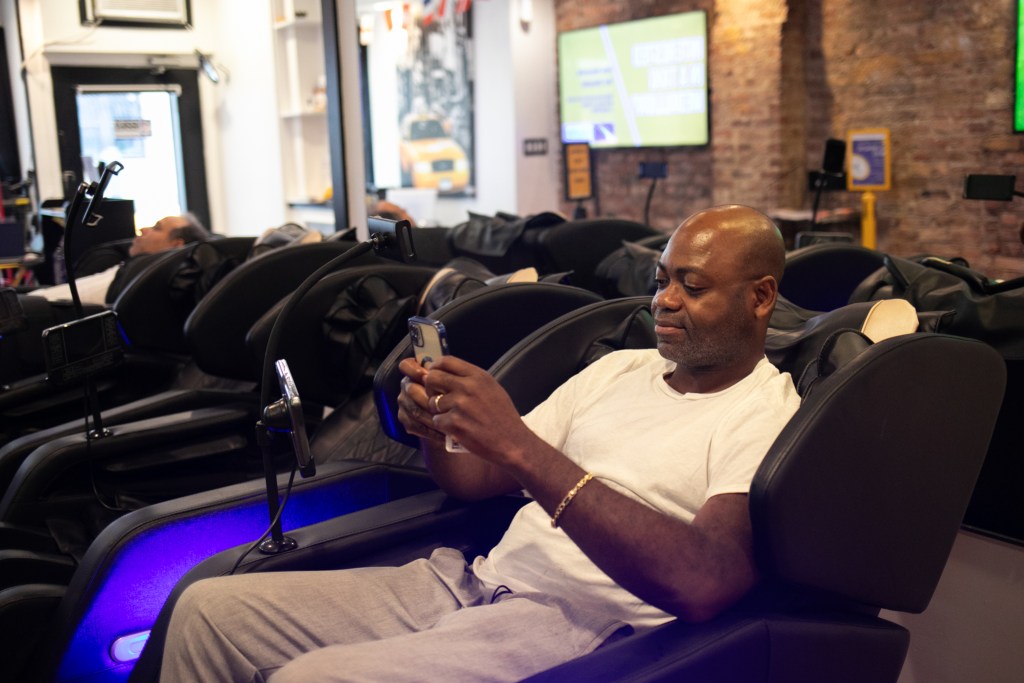
Cabbie Isisdore Yaguieou relaxes in a massage chair at the Taxi Clubhouse in Chelsea, Sept. 25, 2025. Credit: Ben Fractenberg/THE CITY
The issue of restroom availability and designated parking areas resurfaced last month, when drivers for Uber and Lyft rallied outside of City Hall in support of a City Council bill that would allow them to park in spaces designated for commercial vehicles.
One of the 70 relief stands in Manhattan is directly across from the clubhouse, with parking spaces for up to 10 taxis and Uber and Lyft vehicles. The stand opened soon after the clubhouse began welcoming drivers in February 2023 and as the industry slowly emerged from a pandemic that battered the business and also reduced the number of places where drivers are welcomed to do what they have to do.
“The places the drivers had been traditionally going to use the restroom or going to rest were closed,” said Danielle DiTomo, the clubhouse’s director of driver experience. “We were continuously hearing from drivers that there was nowhere for them to go.”

More than 100,000 TLC-licensed drivers have visited the Taxi Clubhouse since it opened in 2023, Sept. 25, 2025. Credit: Ben Fractenberg/THE CITY
But more relief is on the way.
Marblegate Capital Corporation, the Connecticut-based private-equity firm that is the biggest holder of taxi medallion loans as well as the city’s largest taxi-fleet operator, acquired the clubhouse in a merger with another finance company. Now it has plans to open two more clubhouses in the city at yet-to-be-determined locations.
“This announcement is just the beginning of our efforts to bring more creative and common-sense solutions to the taxi industry,” Andrew Milgram, Marblegate’s chief executive officer, said in a statement.
The clubhouse concept is one that Councilmember Justin Brannan (D-Brooklyn) said Uber and Lyft could follow for more than 80,000 of their own drivers. Spokespersons for both companies did not respond to requests for comments from THE CITY.
“These billion-dollar app companies are only billion-dollar app companies because of the workers they so often treat as expendable,” said Brannan, sponsor of a bill that would provide access to commercial spaces for drivers of for-hire vehicles for up to 30 minutes at a time. “So any time they show a shred of humanity, it’s worth noting.
“But it shouldn’t be this rare — or require such a fight — for workers to be treated with dignity.”
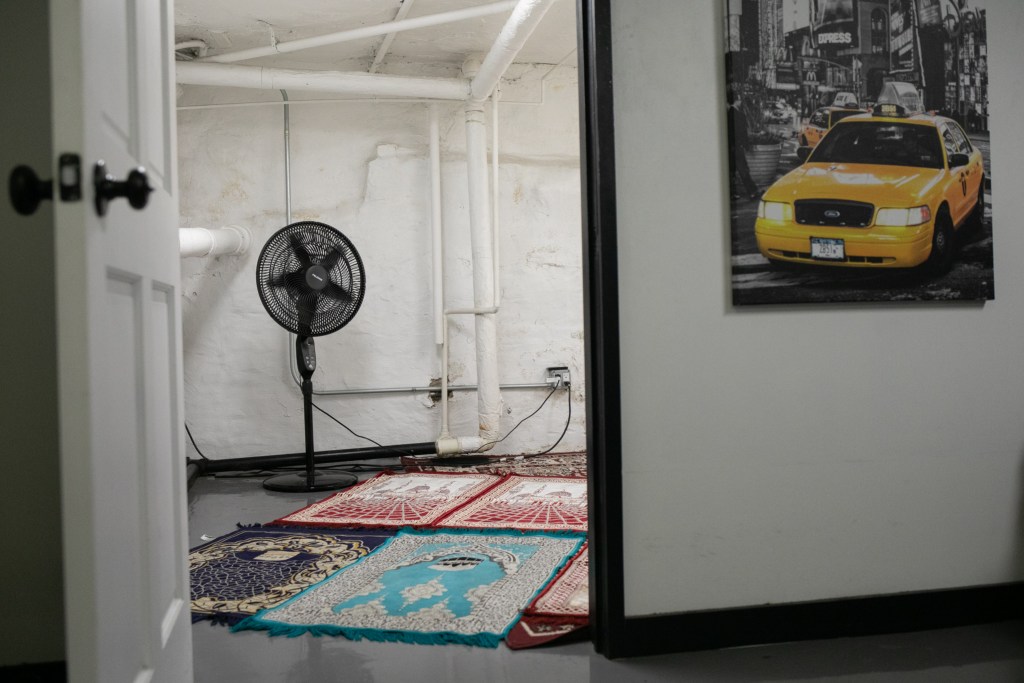
The cabbie clubhouse provides a prayer room for drivers, Sept. 25, 2025. Credit: Ben Fractenberg/THE CITY
The idea for a clubhouse grew out of feedback from drivers, with its location selected through the use of TLC data that pinpoints passenger pick-up and drop-off locations by taxi zone. According to TLC, there have been more than 4.9 million pick-ups and drop-offs this year alone in the part of Chelsea where the clubhouse is located.
A little north of the clubhouse, in the taxi zone that covers Times Square and the Theater District, that number is up to 5.5 million, according to the TLC. Only LaGuardia and JFK airports have higher totals.
“Being here in Chelsea, being in Manhattan, was going to be a place where we could help the most drivers,” DiTomo said.
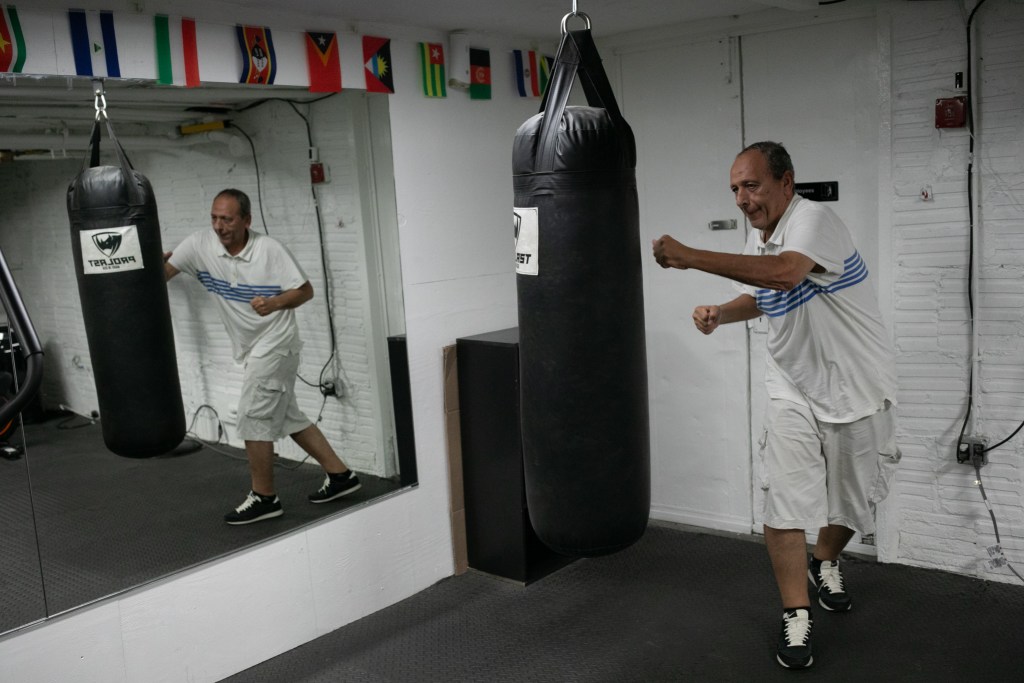
Veteran cabbie Haney Badr pounds a punching bag in a basement gym at clubhouse for TLC-licensed drivers, Sept. 25, 2025. Credit: Ben Fractenberg/THE CITY
Since opening more than two years ago, the Taxi Clubhouse has had more than 100,000 visits, with drivers able to pop in from 11 a.m. to 7 p.m. every day but Sunday.
In addition to the prayer room, small gym and massage chairs, the clubhouse provides visitors space to heat and eat meals. It has Wudu stations — with “ATTENTION THESE ARE NOT URINALS” signs above each — where drivers can cleanse hands, face and feet before ritual Islamic prayers.
A vending machine sells not only snacks, but rolls of paper used to print taxi receipts. By the clubhouse’s front door, a flatscreen panel serves as a bulletin board of sorts for vehicle owners and drivers looking for partners or referrals.
There are also regular visits from officials with the Taxi and Limousine Commission and workers from Memorial Sloan Kettering Cancer Center, who provide drivers with health screenings and guidance on how to be healthier.
“It’s just movement,” DiTomo said. “We want drivers to be healthy.”
Md Quyum, 53, a cabbie since 2009, said the services available in the clubhouse “are a step up” and have eased some of the burdens faced by drivers.
“This is not like before,” Quyum said while making himself a cup of coffee, adding that he no longer carries a bottle in his taxi in case nature calls.
Korkab, who has been a cabbie since 2005, said that having more spots to use the restroom is a No. 1 priority for drivers.
“I don’t want to keep myself holding for two hours looking for a place to use the bathroom,” he said. “I’m a human being, not a dog who can do it in the street.”
Korkab chuckled at the thought before adding, “Some days, I wish we were dogs.”
This press release was produced by The City. The views expressed here are the author’s own.

